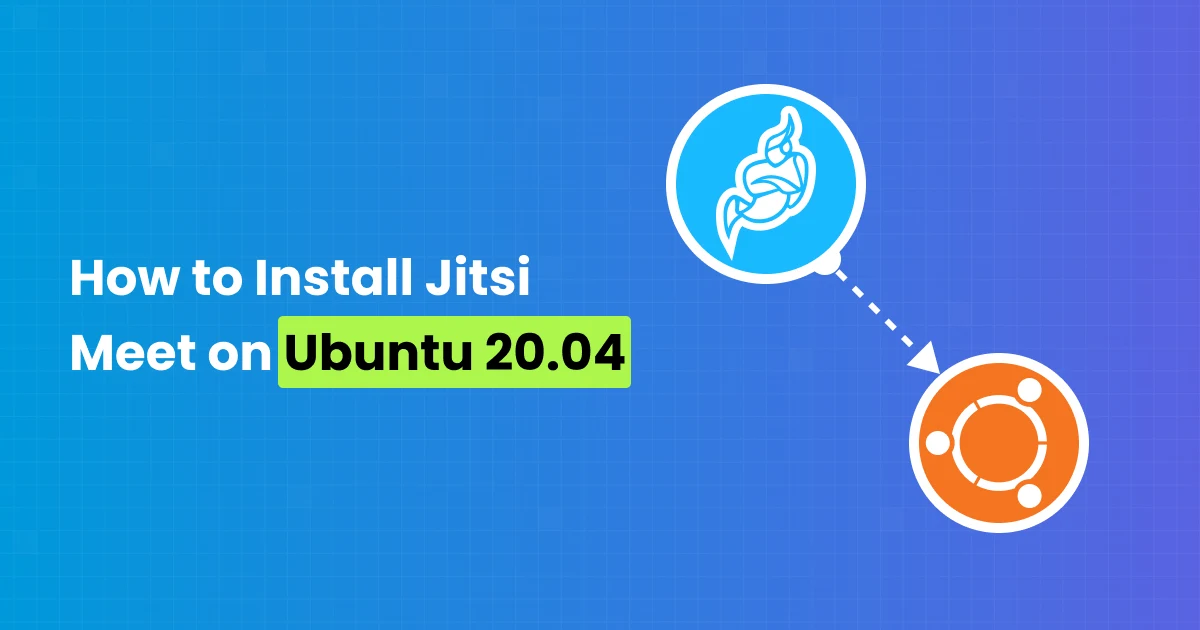Introduction
If you’re looking for a free and secure video conferencing solution, Jitsi Meet is a great option. It allows you to host your own video calls without relying on third-party services like Zoom or Google Meet. In this guide, I’ll walk you through the step-by-step process of installing Jitsi Meet on Ubuntu 20.04.
I’ve set up Jitsi Meet multiple times, and trust me, it’s easier than you think! Whether you’re running a small business or just want a private space for online meetings, this guide will help you install and configure Jitsi Meet like a pro.
Prerequisites
Before we begin, ensure you have the following:
- A fresh Ubuntu 20.04 server (minimum 2GB RAM, 2 vCPUs recommended)
- A domain name (e.g.,
meet.example.com) - Root or sudo access to the server
- Firewall access for ports
80,443, and10000
Step 1: Update Your Server
First, update and upgrade your Ubuntu system to ensure all packages are up to date:
sudo apt update && sudo apt upgrade -y
Once the upgrade is complete, restart your server:
sudo reboot
Step 2: Set Up a Hostname and Firewall
Set up your hostname to match your domain name:
sudo hostnamectl set-hostname meet.example.com
Next, configure the firewall to allow necessary traffic:
sudo ufw allow OpenSSH
sudo ufw allow 80/tcp
sudo ufw allow 443/tcp
sudo ufw allow 10000/udp
sudo ufw enable
Check the status to ensure rules are active:
sudo ufw status
Step 3: Install Jitsi Meet
1. Add Jitsi Meet Repository
Jitsi Meet provides an official repository. First, add it to your server:
echo 'deb https://download.jitsi.org stable/' | sudo tee /etc/apt/sources.list.d/jitsi-stable.list
Add the repository key:
wget -qO - https://download.jitsi.org/jitsi-key.gpg.key | sudo apt-key add -
Update package lists:
sudo apt update
2. Install Jitsi Meet
Run the following command to install Jitsi Meet:
sudo apt install jitsi-meet -y
Step 4: Configure SSL with Let’s Encrypt
To secure your Jitsi Meet server with SSL encryption, run:
sudo /usr/share/jitsi-meet/scripts/install-letsencrypt-cert.sh
Follow the instructions and provide an email address for SSL certificate notifications. After installation, your Jitsi Meet instance will be accessible via https://meet.example.com.
Step 5: Test Your Jitsi Meet Server
Open a browser and visit your domain (https://meet.example.com). Create a new meeting and test audio and video functionality.
If everything works fine, congratulations! You’ve successfully installed Jitsi Meet on Ubuntu 20.04.
Additional Configurations
Enable Authentication
If you want to restrict access to your meetings, set up authentication:
Open the Prosody configuration file:
sudo nano /etc/prosody/conf.avail/meet.example.com.cfg.lua
Find authentication = "anonymous" and change it to:
authentication = "internal_hashed"
Save the file and restart services:
sudo systemctl restart prosody jicofo jitsi-videobridge2
Performance Tuning
For better performance, configure Jitsi Meet to handle more users by modifying the Jitsi Videobridge settings:
sudo nano /etc/jitsi/videobridge/sip-communicator.properties
Add the following lines:
org.jitsi.videobridge.DISABLE_TCP_HARVESTER=true
org.jitsi.videobridge.ENABLE_REST_COLIBRI=true
Save and restart the service:
sudo systemctl restart jitsi-videobridge2
Conclusion
Setting up Jitsi Meet on Ubuntu 20.04 is an excellent way to host secure and private video meetings. With a few commands, you can install and configure Jitsi Meet with SSL encryption for a smooth and professional experience.
If you found this guide helpful, share it with others who might need it. Happy video conferencing!
This guide ensures a secure, optimized, and user-friendly Jitsi Meet installation. Let me know if you have any questions!
